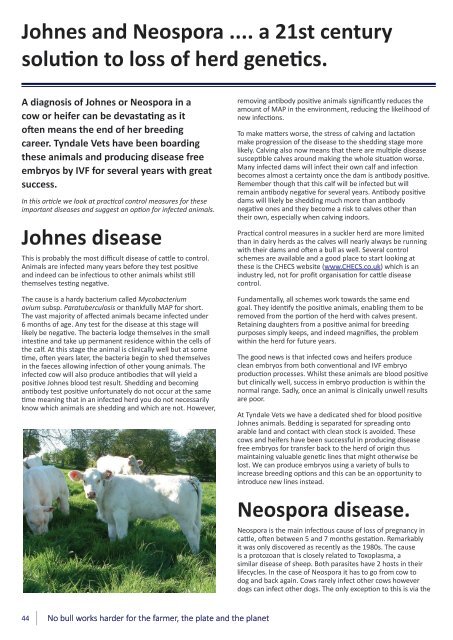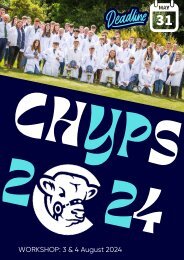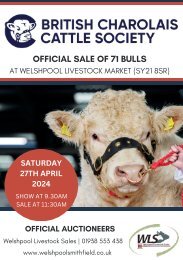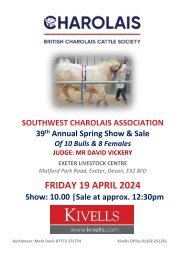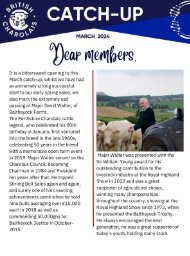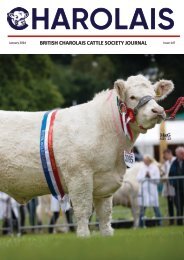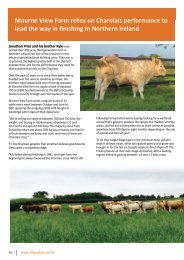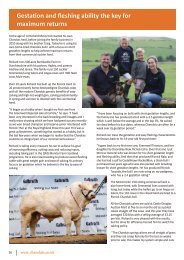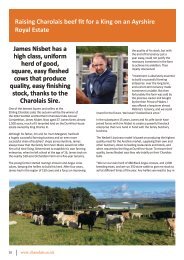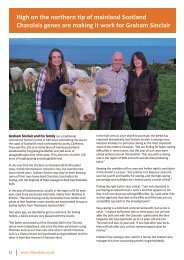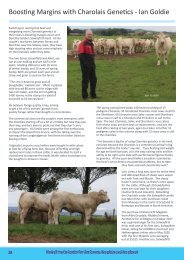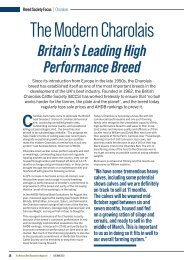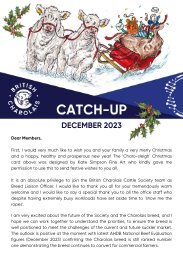January Newsletter 2023
January Newsletter 2023
January Newsletter 2023
You also want an ePaper? Increase the reach of your titles
YUMPU automatically turns print PDFs into web optimized ePapers that Google loves.
Johnes and Neospora .... a 21st century<br />
solution to loss of herd genetics.<br />
A diagnosis of Johnes or Neospora in a<br />
cow or heifer can be devastating as it<br />
often means the end of her breeding<br />
career. Tyndale Vets have been boarding<br />
these animals and producing disease free<br />
embryos by IVF for several years with great<br />
success.<br />
In this article we look at practical control measures for these<br />
important diseases and suggest an option for infected animals.<br />
Johnes disease<br />
This is probably the most difficult disease of cattle to control.<br />
Animals are infected many years before they test positive<br />
and indeed can be infectious to other animals whilst still<br />
themselves testing negative.<br />
The cause is a hardy bacterium called Mycobacterium<br />
avium subsp. Paratuberculosis or thankfully MAP for short.<br />
The vast majority of affected animals became infected under<br />
6 months of age. Any test for the disease at this stage will<br />
likely be negative. The bacteria lodge themselves in the small<br />
intestine and take up permanent residence within the cells of<br />
the calf. At this stage the animal is clinically well but at some<br />
time, often years later, the bacteria begin to shed themselves<br />
in the faeces allowing infection of other young animals. The<br />
infected cow will also produce antibodies that will yield a<br />
positive Johnes blood test result. Shedding and becoming<br />
antibody test positive unfortunately do not occur at the same<br />
time meaning that in an infected herd you do not necessarily<br />
know which animals are shedding and which are not. However,<br />
removing antibody positive animals significantly reduces the<br />
amount of MAP in the environment, reducing the likelihood of<br />
new infections.<br />
To make matters worse, the stress of calving and lactation<br />
make progression of the disease to the shedding stage more<br />
likely. Calving also now means that there are multiple disease<br />
susceptible calves around making the whole situation worse.<br />
Many infected dams will infect their own calf and infection<br />
becomes almost a certainty once the dam is antibody positive.<br />
Remember though that this calf will be infected but will<br />
remain antibody negative for several years. Antibody positive<br />
dams will likely be shedding much more than antibody<br />
negative ones and they become a risk to calves other than<br />
their own, especially when calving indoors.<br />
Practical control measures in a suckler herd are more limited<br />
than in dairy herds as the calves will nearly always be running<br />
with their dams and often a bull as well. Several control<br />
schemes are available and a good place to start looking at<br />
these is the CHECS website (www.CHECS.co.uk) which is an<br />
industry led, not for profit organisation for cattle disease<br />
control.<br />
Fundamentally, all schemes work towards the same end<br />
goal. They identify the positive animals, enabling them to be<br />
removed from the portion of the herd with calves present.<br />
Retaining daughters from a positive animal for breeding<br />
purposes simply keeps, and indeed magnifies, the problem<br />
within the herd for future years.<br />
The good news is that infected cows and heifers produce<br />
clean embryos from both conventional and IVF embryo<br />
production processes. Whilst these animals are blood positive<br />
but clinically well, success in embryo production is within the<br />
normal range. Sadly, once an animal is clinically unwell results<br />
are poor.<br />
At Tyndale Vets we have a dedicated shed for blood positive<br />
Johnes animals. Bedding is separated for spreading onto<br />
arable land and contact with clean stock is avoided. These<br />
cows and heifers have been successful in producing disease<br />
free embryos for transfer back to the herd of origin thus<br />
maintaining valuable genetic lines that might otherwise be<br />
lost. We can produce embryos using a variety of bulls to<br />
increase breeding options and this can be an opportunity to<br />
introduce new lines instead.<br />
Neospora disease.<br />
Neospora is the main infectious cause of loss of pregnancy in<br />
cattle, often between 5 and 7 months gestation. Remarkably<br />
it was only discovered as recently as the 1980s. The cause<br />
is a protozoan that is closely related to Toxoplasma, a<br />
similar disease of sheep. Both parasites have 2 hosts in their<br />
lifecycles. In the case of Neospora it has to go from cow to<br />
dog and back again. Cows rarely infect other cows however<br />
dogs can infect other dogs. The only exception to this is via the<br />
44<br />
No bull works harder for the farmer, the plate and the planet


